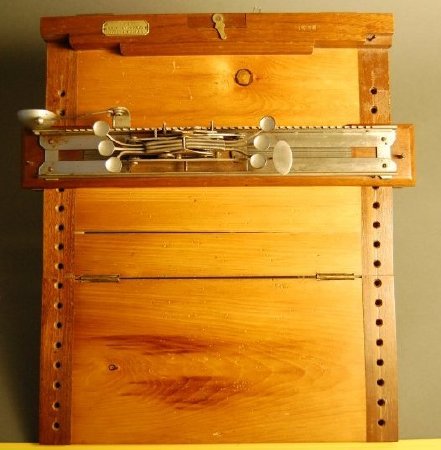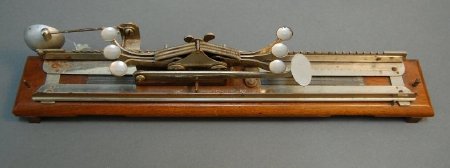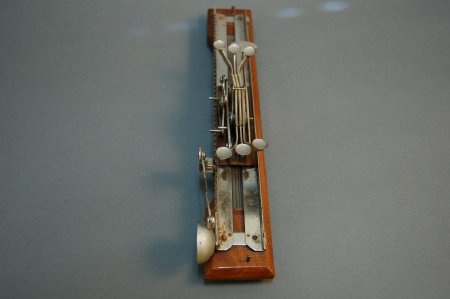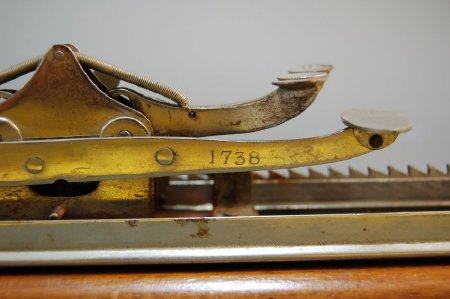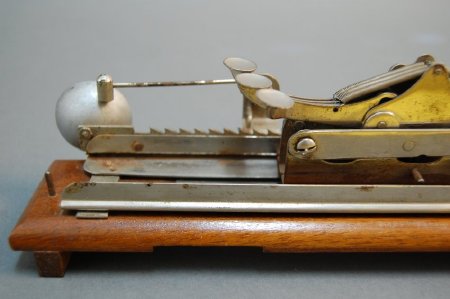Object ID:
1999.30a-b
Title:
Stainsby-Wayne Braille-Writer, Interlining Model, RK
Description:
Original Stainsby-Wayne Braillewriter; nickel plated steel writer in a steel framed carriage, screwed to a wooden bed; pegs on the bottom of the bed adjust the writer's position up and down a folding wooden board with a hinged paper clamp at the top; (a) writer has six "dot" keys angled away from the user on both sides, keys are "reversed" (keys arranged for writing braille in reverse as on a slate); space key on right, two carriage release levers in middle back; die-plate is grooved; margin bell on left, mounted directly to serrated rail, separate bracket to right holds the bell hammer wire; "1738" stamped on space key arm.; (b) wooden tablet board is hinged in middle to allow lower section to bend closed when unit is in storage, constructed with pine center dadoed to hardwood side pieces; two columns of 18 holes, hinged hardwood paper clamp on top with brad teeth in both top and bottom, brass swivel catch locks clamp closed: brass label on left of top jaw of clamp, "THE STAINBY-WAYNE BRAILLE-WRITER"; stamped on top jaw on right, "1738".
Dimensions:
H-3 W-13.5 D-14.5 inches
Date:
ca. 1915
Made by:
National Institute for the Blind; Wayne, Albert
Place of Origin:
Birmingham, England
Provenance:
Henry Stainsby (1859-1925), Supt. of the Birmingham Royal Institution for the Blind, (later General Secretary of the British & Foreign Blind Association) along with Birmingham manufacturer Albert Wayne, introduced their portable braillewriter in late 1903. It would be frequently tweaked and altered over the next 30 years. The National Institute for the Blind, Stainsby and Arthur Howlett received a patent for an "improved" machine in 1922. An all metal "Improved Stainsby" was introduced in 1933. This example (1999.30) reflects the design of the early model Stainsby-Wayne Braillewriter as it was pictured in the June 1910 edition of the Braille Review: its bell located on the far left and has a long wire striker, it has teeth only on the rear rail, and its space key is more oval and set at a right angle to the rails. The paper clamp, with its swivel locking bar and unique stepped shape, is also unique to that design.
Credit Line:
Museum Purchase, 1999.30
